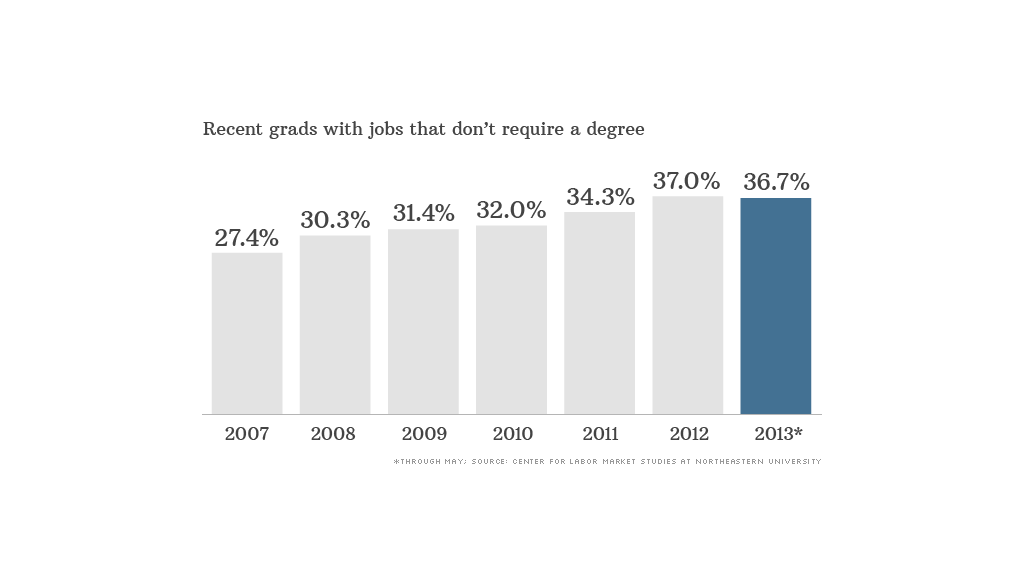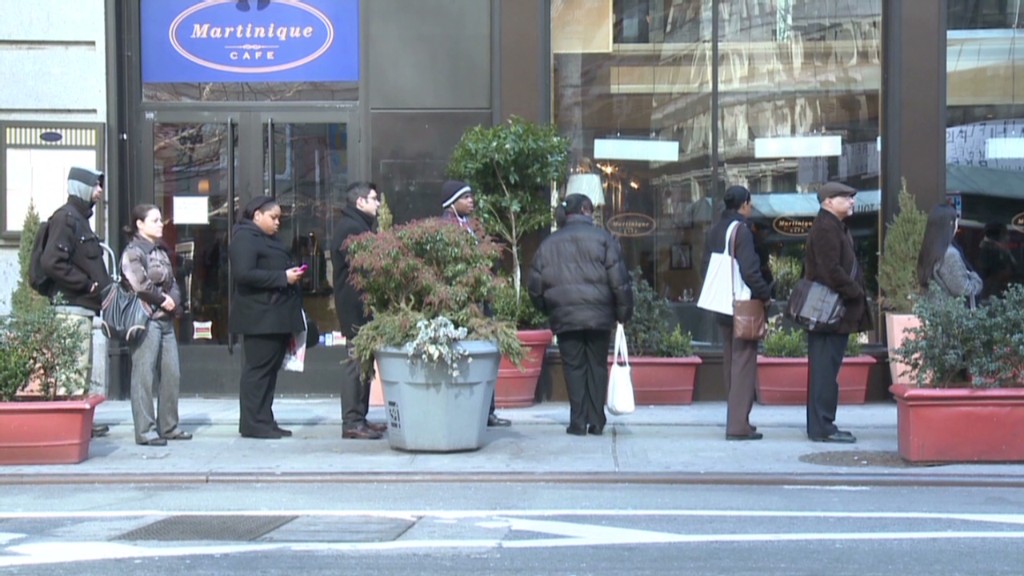
More than a third of recent college grads with jobs are working in positions that don't require a degree.
Economists call that figure the "mal-employment" rate, and right now it tops 36% for college-educated workers under the age of 25, according to figures crunched by Andrew Sum, director of the Center for Labor Market Studies at Northeastern University.
"People don't go to college to be a waiter or a bartender," Sum said. "They lose and we lose."
The official unemployment rate for grads under age 25 was 7% in May, but that doesn't reflect all those who are under-utilized in one way or another. Nearly 8% of grads are working part-time, but would like full-time positions. These workers aren't counted in the mal-employment rate.
Not surprisingly, hospitality and retail are the most common occupations of the mal-employed. Of the nearly 3 million recent college grads, 152,000 are working in retail sales and nearly 100,000 work as waiters, bartenders or in other food service posts. Another 80,000 serve as clerks or customer service representatives, with 60,000 working in construction or manual labor.
Your major matters. Those with degrees in accounting, engineering or computer sciences are much more likely to find college-level work than those who focus on fields like "sports and recreation" or "regional studies," researchers have found.
Also, recent grads who worked in their chosen fields while in school had an easier time landing college-level jobs, Sum said. Location is important, too. Those living in the South, Southwest and West had a rougher time because the labor markets are weaker there.
Related: 7 success stories - 'How I found a job after graduation'
College grads didn't always have it this tough. In 2000, the mal-employment rate was less than 28%.
But the Great Recession hit this group hard. Though the economy has improved in the past three years, those gains haven't yet translated into better job opportunities for young adults.
"Labor demand is still relatively weak, and you have increased competition for jobs with adults," said Sum, who thought the situation would have improved by now.

Taking a job below your education level carries a high financial toll. The mal-employed earn up to 40% less per week than their peers, Sum found. That could make it harder for them to pay off their student loans, move into their own apartments and even get married.
It can also affect their earnings for decades, since they enter the wage ladder at a lower rung, said Carl Van Horn, founding director of the Heldrich Center for Workforce Development at Rutgers University.
Van Horn asked Rutgers' career services office how the job market looks right now for the school's recent grads. They told him that the market has loosened up from last year, but that many grads are working in positions that don't require degrees. He expects that to continue.
"Employers are taking college grads over high-school grads, but paying them high-school grad wages, he said.


